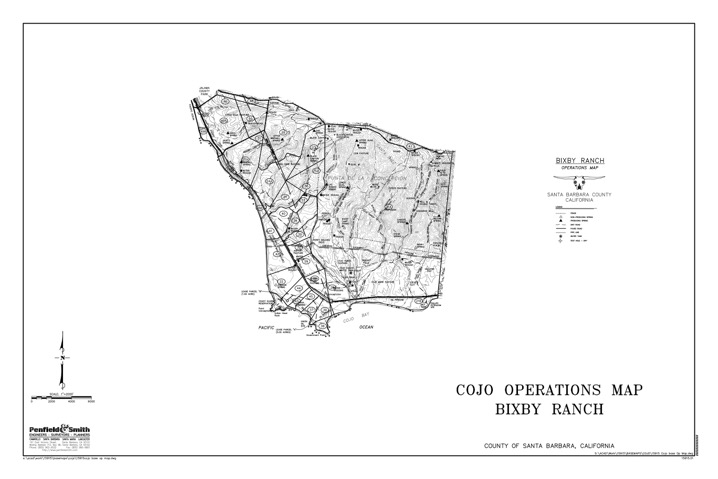Cojo Jalama Ranch Owner Agrees to Restore Habitat
Reaches Deal with Coastal Commission over Unpermitted Wells, Roads, and Cultural Site Disturbance
An agreement struck between the California Coastal Commission and representatives of the Cojo Jalama Ranches (aka Bixby Ranch) calls for the restoration of large swaths of damaged wildlife habitat and the donation of 35 oceanfront acres of privately held ranch land to the County of Santa Barbara. The deal, described by commission staff as “an amicable resolution,” addresses years of unpermitted well digging, road grading, and “adverse impacts to Chumash sites” and sensitive coastal habitat on the 24,364-acre ranch, located on Point Conception between Hollister Ranch and Jalama Beach County Park. Its owner, Boston-based investment firm The Baupost Group — which purchased it from the Bixby family in 2007 for $135 million — will also pay $500,000 to the commission’s Violation Remediation Account. “We hope that this agreement underscores the strong working relationship [we] have with the [commission] that is grounded in transparency and cooperation,” Brian Zilla, a managing director at Baupost, told commissioners at the public hearing on November 9 in Bodega Bay. “We think this is a win for the people of Santa Barbara County and the State of California.”
The 35 donated acres run nearly a mile along the Pacific Ocean just south of Jalama Beach and include a section of Jalama Road where surfers and other beachgoers parked freely until about 10 years ago, when “no parking” signs were installed and tickets issued following complaints from ranch management. On paper, the donation will more than double the size of the existing 25-acre Jalama Beach park, an already popular campground with a small store and burger joint. The county has 18 months to accept the donation, described by former county planning commissioner Susan Jordan as “an extraordinary expansion of access to this stretch of the coast.”
Owned by the Bixby family for nearly a century, the property, which combined the historic Cojo and Jalama ranches, was purchased by Baupost and Coastal Management Resources, a management company headed up by Lake Arrowhead resident Linda Miller. At the time of the 2007 sale, Miller said in a statement, “We appreciate the beauty of this land and the resources it shelters … [and] have no preconceived plans for the property and believe that any future plan will only be possible after extensive consultation with the public, community leaders, elected officials, environmentalists, government officials, and longtime local ranchers.”

By late 2010, the Coastal Commission started hearing complaints about land-use activities happening on the Cojo Jalama, backed by aerial imagery showing extensive agricultural tilling of an area that had recently been restored as wildlife habitat after an oil company shut down and cleaned up after its facility on a lot leased from the ranch. The site was home to the endangered Gaviota tarplant and other sensitive species, prompting lawsuits from the California Native Plant Society and the Gaviota Coast Conservancy. Coastal Commission staffers “experienced profound difficulty” trying to work with Cojo Jalama representatives, according to testimony, but still managed to discover more unpermitted projects, including 37 water wells, a concrete culvert and spillway, and more than a dozen graded dirt roads, one of which connected a coastal bluff to the beach below.
“Unfortunately … until about the end of 2016, it became clear that the then-manager … was not focused on a resolution of the matter,” according to the staff report. “However, after an apparent change of management, in late 2016/early 2017, [the ranch] began working with enforcement staff in a much more cooperative and collaborative effort to fully resolve all aspects of this matter.” That time frame corresponds to when Baupost took over as the ranch’s sole owner and operator. Miller did not respond to a request for comment.
As part of remediation, Baupost will abandon 16 roads and most of the wells; restore 300 aces of beach and grassland habitat, including the oil facility site; and plant oak trees across 200 acres.


